Biology - Homeostasis
1/89
There's no tags or description
Looks like no tags are added yet.
Name | Mastery | Learn | Test | Matching | Spaced |
|---|
No study sessions yet.
90 Terms
What is metabolism?
sum of all chemical reactions in the body
What are the two types of metabolic reactions?
anabolism and catabolism
What is catabolism?
Breaking down complex molecules into simpler ones. releasing energy in the process
Examples of catabolism
Digestion and cellular respiration
What is anabolism?
building up smaller molecules into bigger ones, requiring energy
Examples of anabolism
- Protein synthesis
- DNA synthesis
- Photosynthesis
What are the main functions of the liver
-Carbohydrate metabolism
-Detoxifying poisonous substances, such as ethanol from alcoholic drinks
-produces bile, which helps digest fats
-Removing lactic acid
-breaks down old, worn-out blood cells and stores the iron until it is needed to make more blood cells
How is the liver involved in carbohydrate metabolism?
When blood glucose levels are too high (after a meal), the liver stores glucose as glycogen (using insulin). When levels are too low, it breaks glycogen back into glucose (glucagon)
How does the liver break down lactic acid?
blood flowing through the muscles transports the lactic acid to the liver, where it is converted back into glucose.
What is homeostasis?
Maintaining a stable internal environment despite external/internal changes.
Why is homeostasis important?
To maintain optimal conditions for enzyme action and all cell functions
Does homeostasis work through positive or negative feedback?
negative feedback
How does homeostasis work?
1. Receptors detect a stimulus (change)
2. Coordination centres receive and process the information
3. Effectors (like muscles or glands) respond to restore the conditions back to the optimum levels
How does homeostasis work?
Stimuli →receptor→coordination centre→effector
Examples of homeostasis
sweating and shivering
What happens if you get too hot?
Sweat glands produce sweat. Blood vessels in the skin widen (vasodilation) to release heat
What happens if you get too cold?
Hairs stand on end which traps a layer of air. Blood vessels in the skin get narrower (vasoconstriction) to keep heat in. you start to shiver.
What is the nervous system
The body's communication system. It uses electrical impulses to enable you to react quickly to your surroundings and coordinate your behaviour
What does the nervous system do?
It allows you to react to your surroundings, control your body's movement and regulates processes inside the body (ike heart rate or breathing)
What are chemoreceptors?
Receptors that respond to chemical stimuli (like taste receptors in the mouth and olfactory receptors in the nose)
What are photoreceptors?
Receptors that detect light (Like rods and cones in the retina of the eyes, which are responsible for vision)
What are mechanoreceptors?
Receptors that detect mechanical stimuli such as touch, pressure, sound or vibrations (like receptors in the skin that detect touch or cochlear hair cells in the ears that detect sound vibration)
What are receptors?
Cells that detect stimuli (changes in the environment)
What are thermoreceptors?
receptors that respond to changes in temperature. found in the skin
What are nociceptors?
Pain receptors that detect harmful stimuli. They are found throughout the body and alert us to potential injuries or tissue damage
What are coordination centres?
areas that receive and process information from receptors
What is the central nervous system?
made up of the brain and spinal cord. acts as the control centre. it processes information and makes decisions.
What is the peripheral nervous system?
the sensory and motor neurons that connect the CNS to the rest of the body
What are neurones?
Cells that carry electrical impulses. it is how the body sends messages through the body
What are the three main types of neurons?
sensory, motor and relay neurons
What do sensory neurons do?
carries messages from the sense organs to the central nervous system
What do motor neurons do?
carries messages from the central nervous system to the muscles or glands
What do relay neurons do?
Links the sensory and motor neurons together. Found inside the central nervous system
How do neurons send messages?
by releasing chemicals called neurotransmitters
What are the adaptations of neurons?
-long axon
-myelin sheath (fatty insulating layer that covers the axon)
-many dendrites (Branch-like extensions that receive signals from other neurons)
-Synaptic Endings (synaptic terminals containing vesicles filled with neurotransmitters at the end of axons)
-many mitochondria
Why do neurons have lots of mitochondria
Provides the energy (ATP) needed for active processes such as neurotransmitter release and ion transport during impulse transmission.
What is the function of dendrites in neurons?
Increases the surface area for receiving signals from other neurons or sensory receptors.
What is the function of the axon in neurons?
carries impulses away from the cell body
What is the function of the myelin sheath in neurons?
Acts as an insulator to prevent signal loss and speeds up impulse transmission
Why do neurons have a long axon?
This allows electrical impulses to be carried over long distances in the body without interruption.
How do neurons work?
1. Electrical impulse travels along the first neuron and reaches the end of it
2. The impulse causes tiny sacs (vesicles) inside the neuron to release neurotransmitter chemicals into the synapse
3. Neurotransmitters diffuse across the gap to the second neuron
4. Receptors on the next neuron detect them. The neurotransmitters bind to the receptor sites on the surface of the second neuron
5. This starts a new electrical signal in the next neuron, continuing the message
6. The neurotransmitters are broken down by enzymes or reabsorbed by the first neurons. The synapse is ready for the next message
What is a synapse?
Gap between neurons
What are neurotransmitters?
chemical messengers that cross the synaptic gaps between neurons
How does the nervous system work?
1. The sensory receptor detects a stimulus, and the information about the change in the environment is sent as an electrical impulse that passes along neurons
2. The sensory neurons carry the impulses to the central nervous system from the sense organ or receptor
3. Once all the information is processed, the CNS sends impulses to the motor neurons
4. The impullse the motor neuron carries stimulates the effectors to bring about responces
Examples of effectors
muscles and glands
Nervous system summary
Stimulus -> Receptor -> Sesory neuron -> Coordinator (CNS) -> Motor neuron -> Effector
How do muscles respond to an impulse?
by contracting
How do glands respond to an impulse?
by releasing chemicals
Why are synapses important?
- ensure impulses travel in one direction only
- allows an impulse from one neuron to be transmitted to multiple other neurons
- can make signals faster or slower
What is a reflex arc
Involuntary response to an external stimulus. Direct connection between sensory and motor neurons without a connection to the brain
How does the reflex arc work?
1. The stimulus is detected by a receptor, and an electrical impulse is passed on to the sensory neuron
2. The sensory neuron passes the impulse to the relay neuron, which passes it to the motor neuron
3. The motor neuron carries the impulse to the effector, and it carries out a response
Example of a reflex arc
touching a hot object
Stimulation of the pain receptor
Impulses travel along the sensory neurone
Impulses travel along a relay neurone
Travel along a motor neurone
The muscles react with a contraction
Reflex arc summary
Stimuli--> receptor--> sensory neuron--> relay neuron--> motor neuron
What is the coordinator in a reflex arc?
the spinal cord or in the unconscious areas of the brain
Why is a reflex arc so fast?
because it skips conscious thought
What is the function of the brain?
Controls the body
What is the difference between the reflex arc and the nervous system?
The nervous system is the body's entire communication network.
A reflex arc is a specific, smaller pathway within it that allows for rapid, automatic responses to stimuli without conscious thought.
What is the cerebrum?
- The largest part of the brain
- Responsible for functions like thought, learning, memory, senses and voluntary movement
- The surface is wrinkled, which increases the surface area to fit more neurons
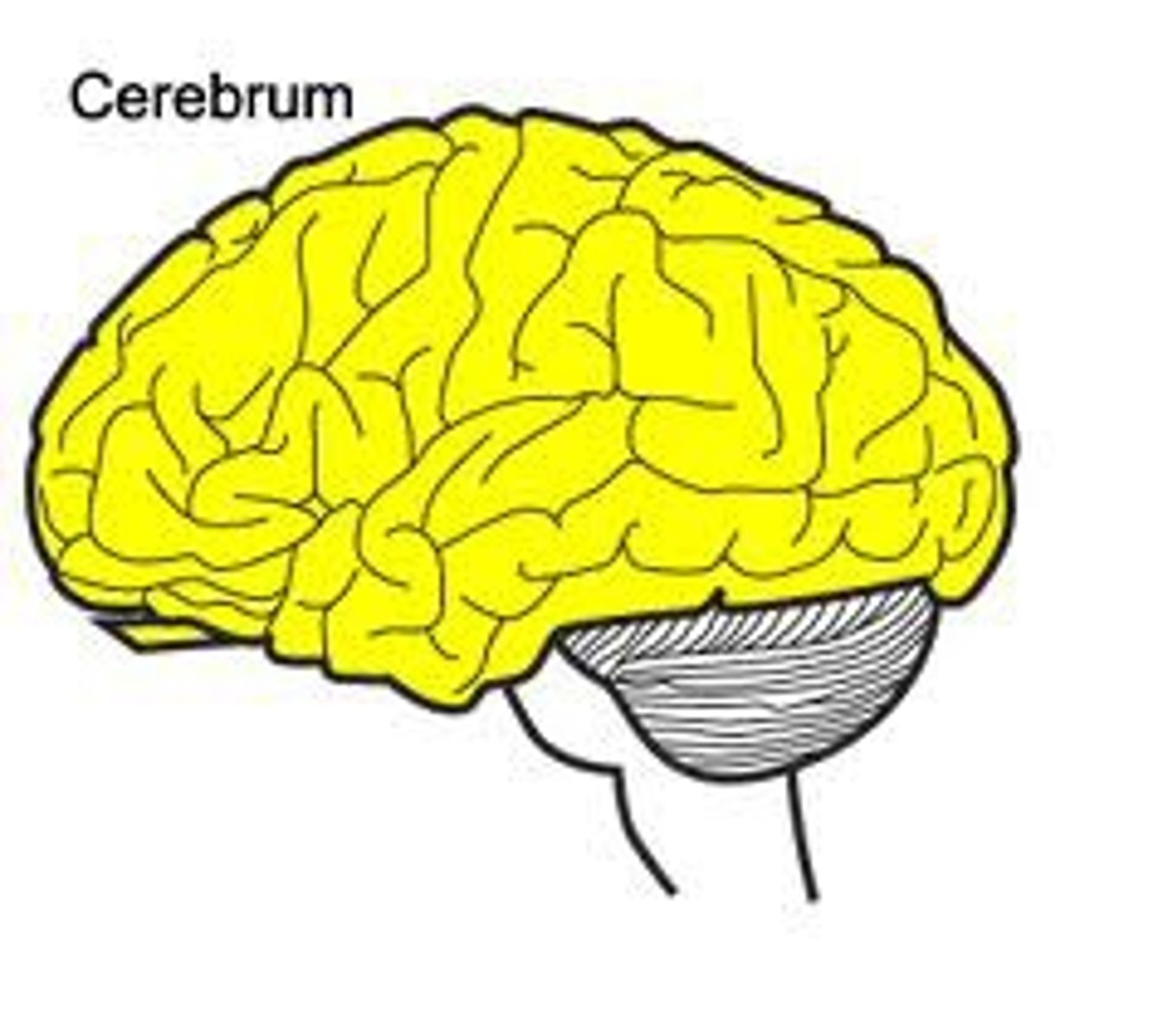
What is the cerebral cortex?
-The outer layer of the brain
-only a few millimetres thick but is packed with neurons
-controls consciousness, intelligence, emotions, decision making, language and processing information from the senses
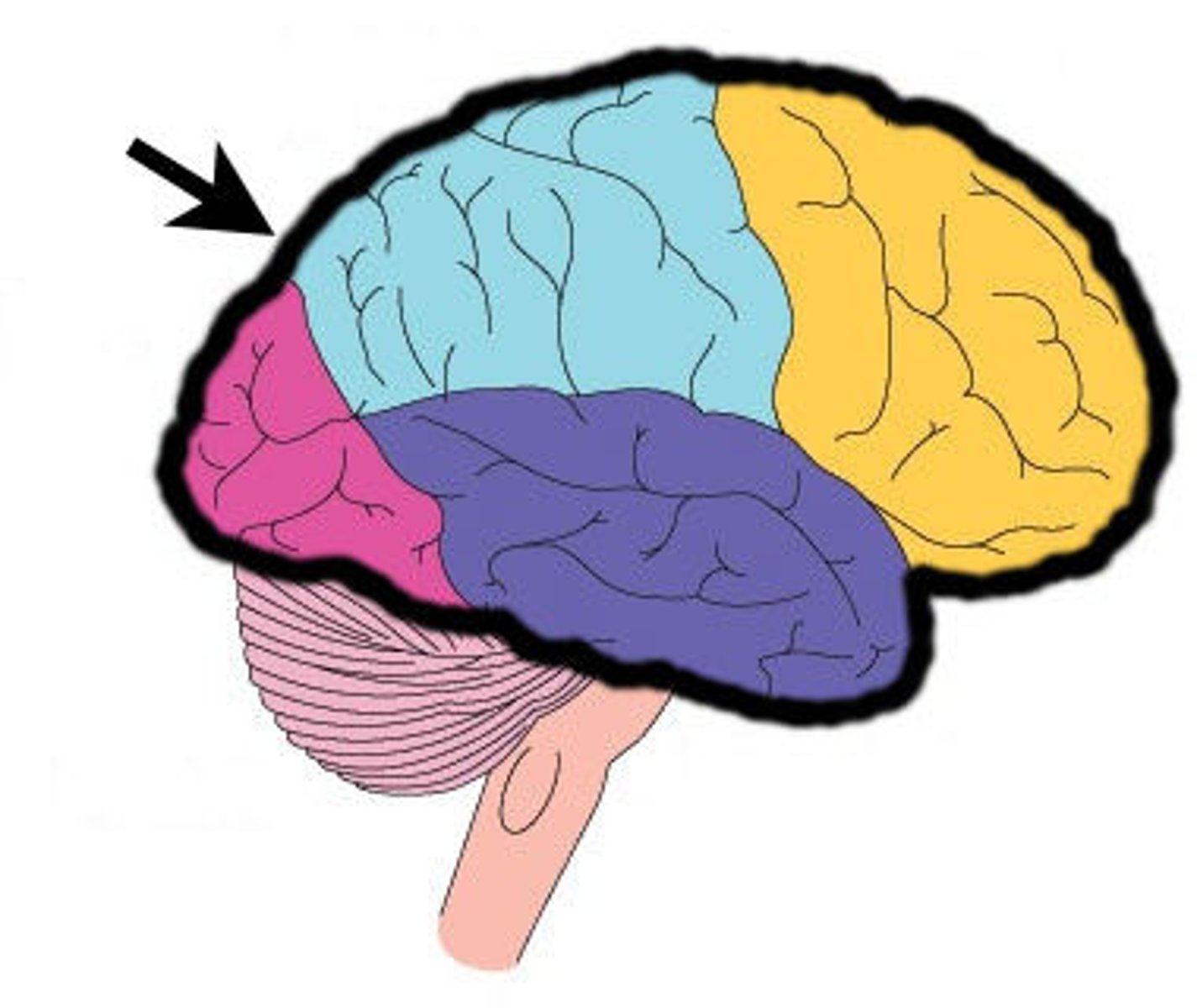
What is the cerebellum?
-Found underneath the back of the brain
-Controls balance, muscle coordination and posture
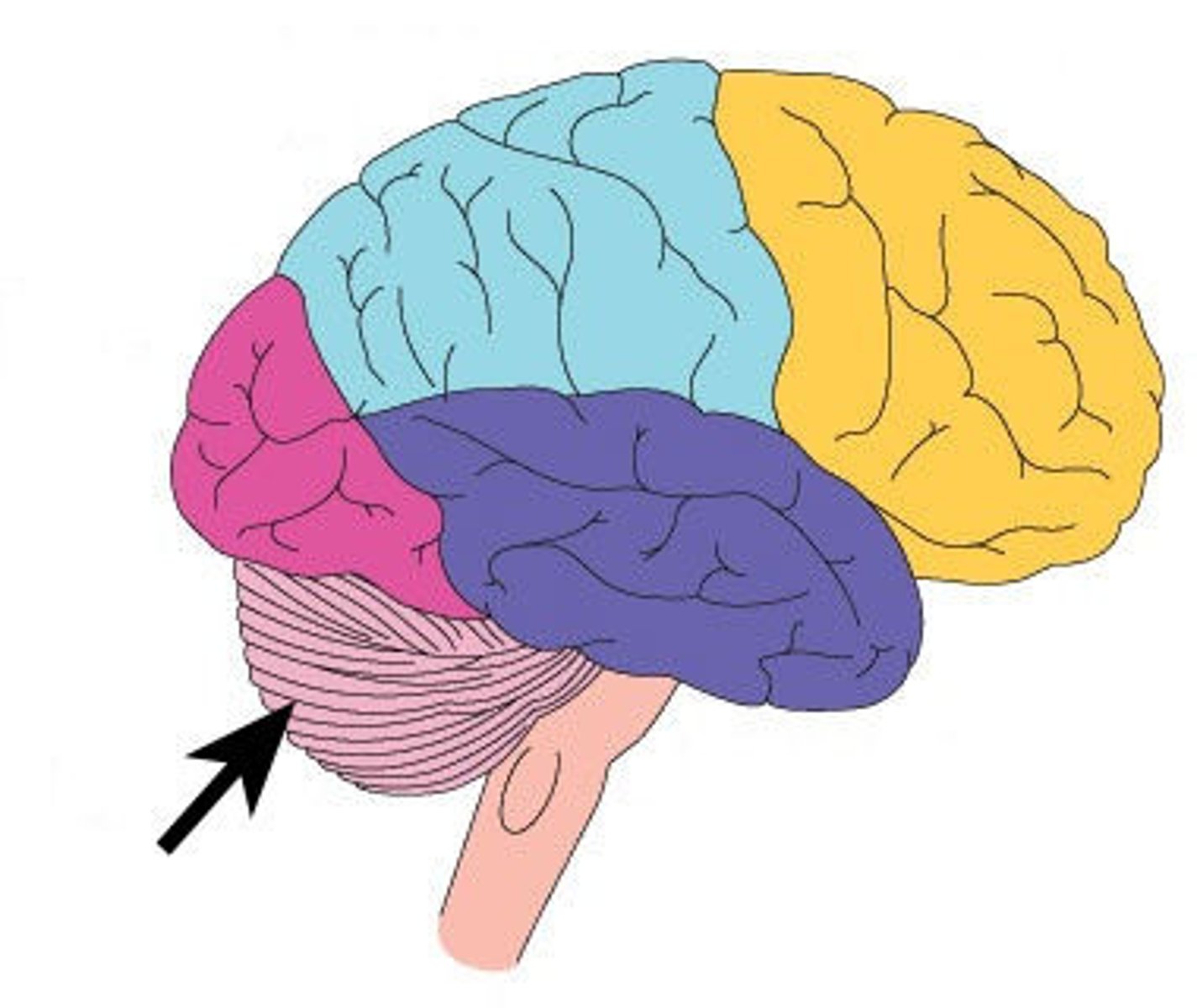
What is the medulla?
-At the base of the brain
-connected to the brainstem
-controls unconscious, automatic functions like breathing, heart rate and movement of the gut
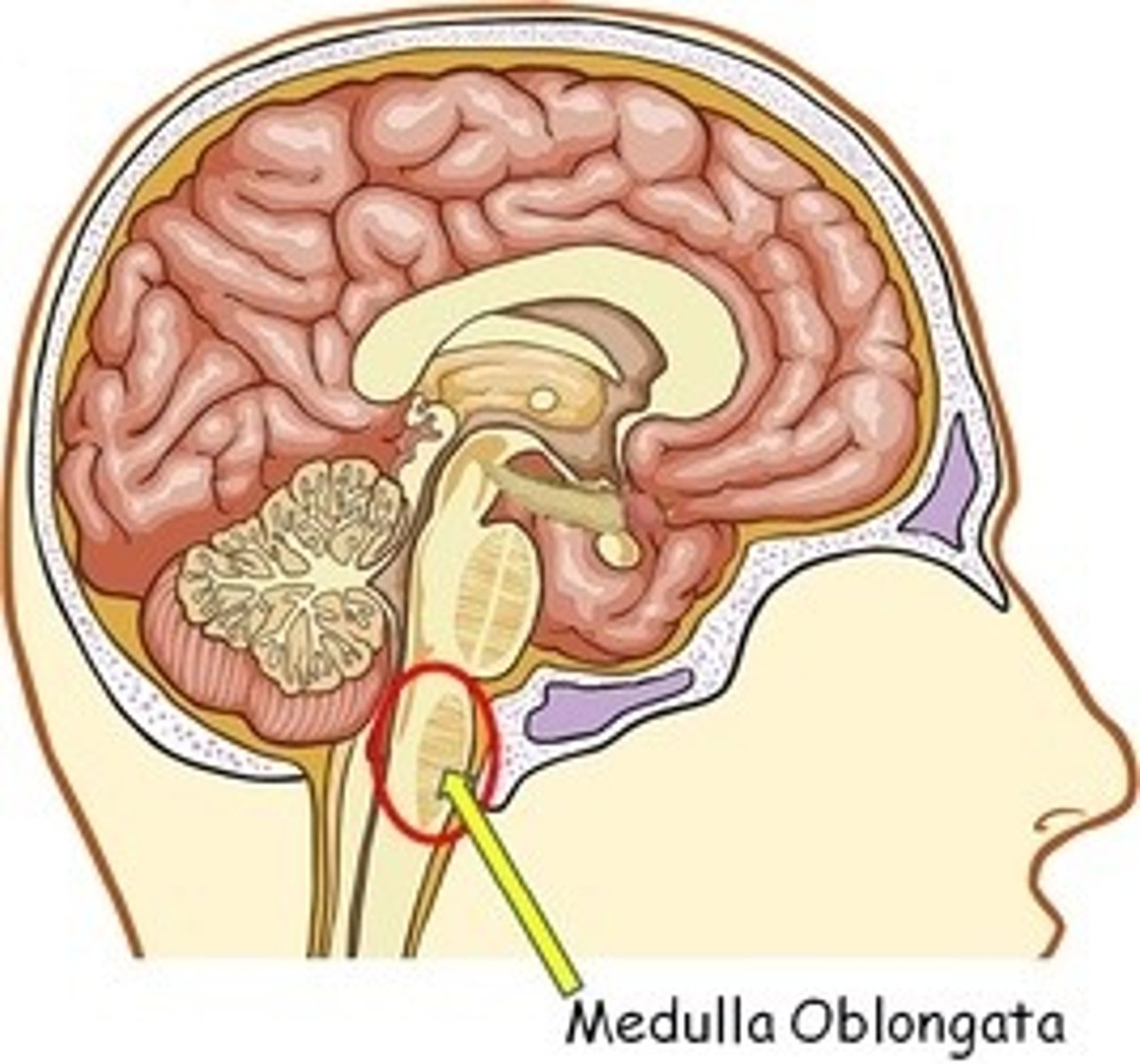
What is the hypothalamus?
-controls homeostasis and pituitary gland
-controls body temperature, thirst and hunger
-sends signals to the pituitary glad
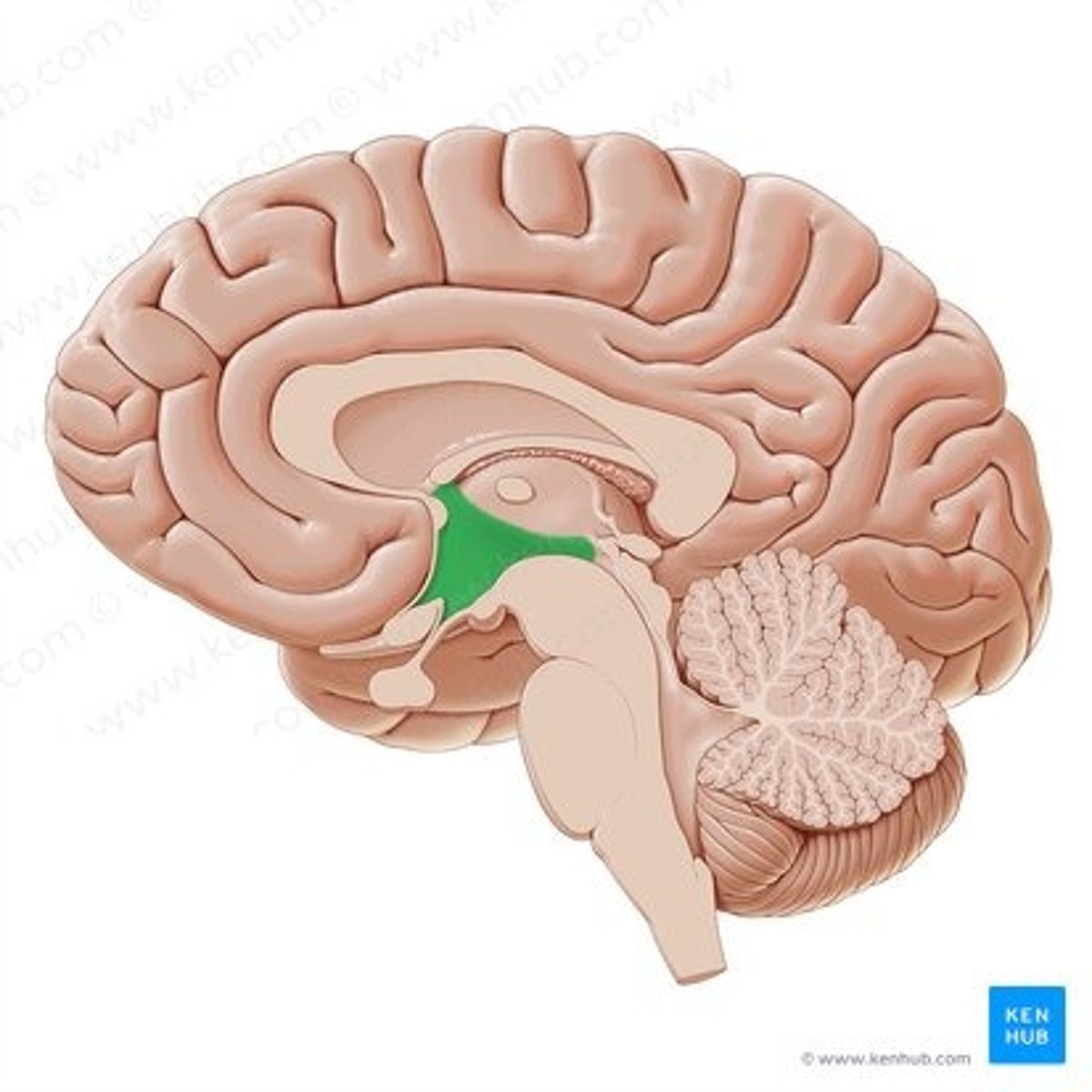
What is the pituitary gland?
It is the master gland. It produces many hormones that regulate homeostasis e.g ADH, FSH
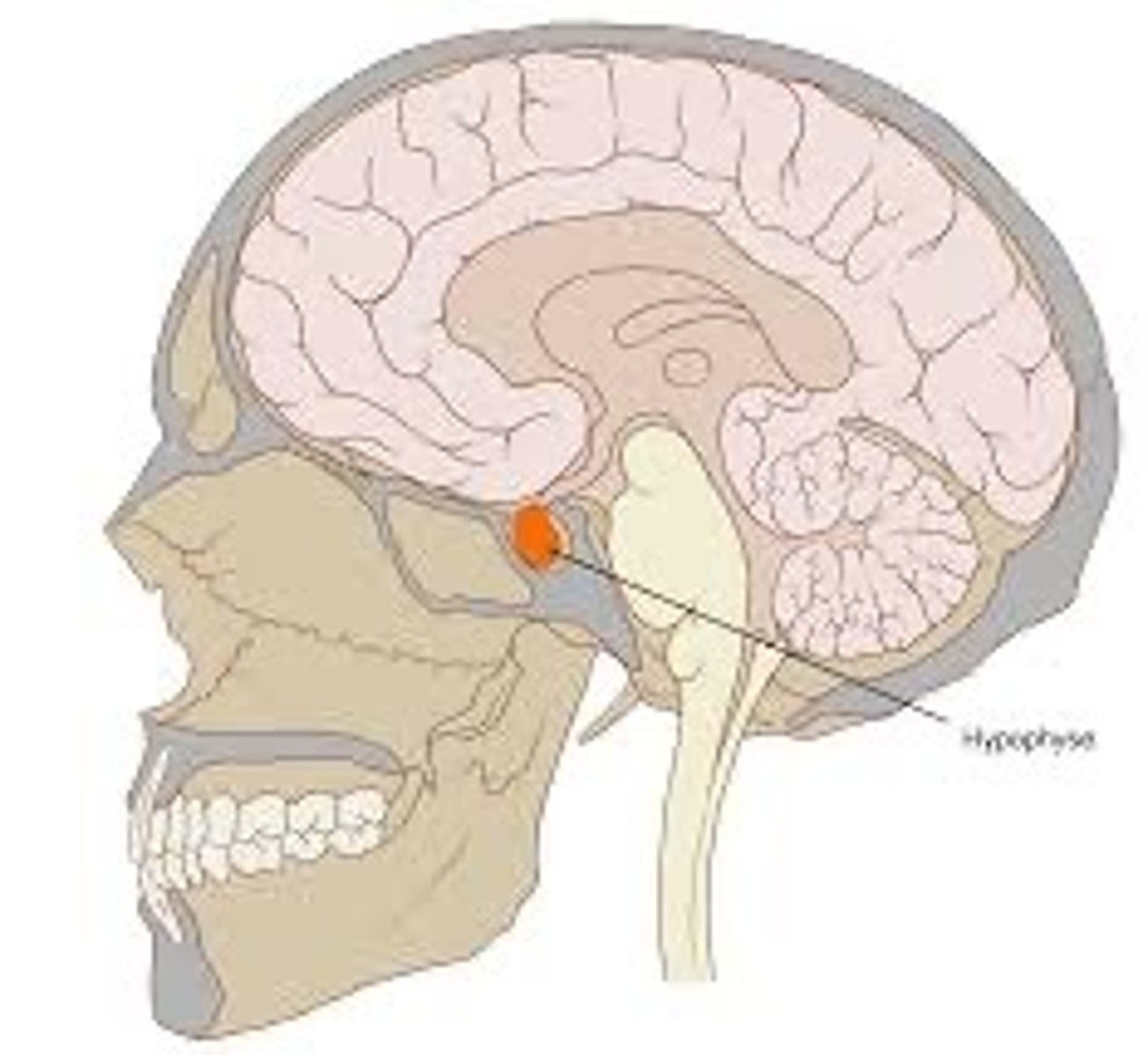
Who is Phinneas Gage?
A man who was involved in an explosives accident. An iron rod passed through his skull which removed part of his cerebral cortext. he survived for 13 years but his personality changed. He became wild rude and unreliable.
What are MRI scans?
Magnetic resonance imaging. Use magnetic fields to produce clear and detailed images. Used to detect tumors or brain disorders
What are the problems with the brain?
-it is very delicate and complex
-as a result it is very difficult to investigate and treat brain disorders
-drugs don't always reach the brain through the membranes that surround it
-Surgery is difficult because it is not fully understood what areas of the brain do, so it is easy to cause unintended damage
What is the function of the eye
detects light energy (photons) and transmits information about intensity, color, and shape to the brain
What is the cornea?
-the transparent layer forming the front of the eye
-refracts light to help it focus on the retina
What is the lens?
-clear, flexible structure just behind the ppupil
-focuses light onto the retina
-fine tunes the focus by changing shape (accommodation)
-controlled by the ciliary muscles and suspensory ligaments
What is the iris?
-a ring of muscle
-colored part of the eye
-controls the size of the pupil
How does the iris control the amount of light entering the eye?
In bright lights:
-the circular muscles contract
-the radial muscles relax
-making the pupil smaller (constriction), so less light enters to protect the retina
In dim lights:
-The radial muscles contract
-The circular muscles relax
-This makes the pupil bigger(dilation) so more light can enter the eye, and you can see better
What is the pupil reflex?
reflex action carried out by the iris to protect the retina from damage in bright light, and protect us from not seeing objects in dim light
What are the two types of fibres in the iris?
-circular muscles (go around the pupil)
-radial muscles (stretch outwards from the pupil)
What is pupil?
-The hole in the centre where light enters
-the size of the pupil changes to control how much light enters the eye
What is the retina?
-found at the back of the eye
-contains light receptor cells (rods and cones)
What are rods?
Light receptor cells are responsible for seeing in the dark, sensitive to dim light.
What are cones?
Light receptor cells that work in bright light and detect colour
What is the optic nerve
Carries electrical impulses from the receptors in the retina to the brain
What is the sclera?
-the tough white outer layer of the eye
-protects the eye from damage
What is the aqueous and vitreous humour
clear fluid that supports the shape of the eye and helps refract light
How does the eye allow you to see?
1. Light enters the eye
2. The iris controls the size of the pupil to regulate how much light enters the eye
3. The lens focuses light onto the retina
4. The retina contains rods and cones ehich detect the light
5. The rods and cones convert light into electrical impulses. These travel along the optic nerve to the brain
6. The visual cortex in the brain processes the impulses and an image is created
Vision summary
Light is focused by the cornea and lens--> lands on the retina--> rods and cones detect it--> optic nerve sends impulses--> brain creates the image
How does the lens focus light?
The lens changes shape (accommodation) to focus light at different distances
For near objects:
-the ciliary muscles contract
-the suspensory ligaments loosen
-The lens becomes thicker (more curved)
-light is refracted more
For far objects
-the ciliary muscles relax
-the suspensory ligaments tighten
-The lens is pulled thin (less curved)
-Light is only slightly refracted
What are the ciliary muscles and suspensory ligaments?
They control the shape of the lens
What is myopia (short-sightedness)
near objects can be seen clearly, but far objects appear blurry
What causes myopia?
The eyeball is too long, or the cornea/lens refracts light too much. As a result, light from distant objects is focused in front of the retina instead of directly on it.
How can myopia be corrected?
By a concave (diverging lens) in glasses. this causes the light rays to spread out slightly so they focus on the retina
What is hypertopia (long-sightedness)?
Distant objects can be seen clearly, but near objects appear blurry.
What causes hypertopia?
The eyball is too short, or the lens/cornea doesn't refract light enough. As a result, light from near objects is focused behind the retina instead of on it
How can hypertopia be corrected?
A convex lens (converging lens) in used in glasses. This bends the light rays inwards before they enter the eye so they focus directly on the retina.